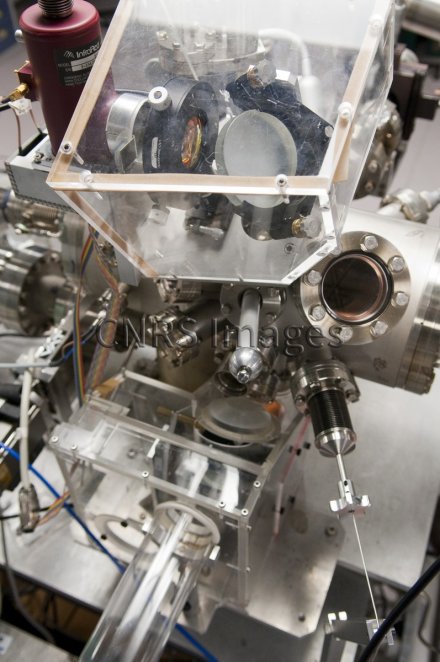Production year
2011

© Cyril FRESILLON/CNRS Images
20110001_0886
Bâti ultravide équipé d'un spectromètre infrarouge à transformée de Fourier capable d'identifier la nature des molécules organiques déposées sur des échantillons de silicium. Ce greffage moléculaire est une étape dans la recherche de nouveaux composants en électronique moléculaire. Le faisceau infrarouge est dirigé vers le bâti ultravide par le tube transparent (bas de l'image), puis introduit par un hublot en ZnSe (Zinc, Sélénium), avant de traverser l'échantillon, de ressortir par un second hublot pour être enfin recueilli par le détecteur de couleur rouge (haut de l'image). Le faisceau infrarouge est toujours isolé de l'atmosphère grâce à différents boîtiers en plexiglas maintenant une atmosphère contrôlée.
The use of media visible on the CNRS Images Platform can be granted on request. Any reproduction or representation is forbidden without prior authorization from CNRS Images (except for resources under Creative Commons license).
No modification of an image may be made without the prior consent of CNRS Images.
No use of an image for advertising purposes or distribution to a third party may be made without the prior agreement of CNRS Images.
For more information, please consult our general conditions
2011
Our work is guided by the way scientists question the world around them and we translate their research into images to help people to understand the world better and to awaken their curiosity and wonderment.